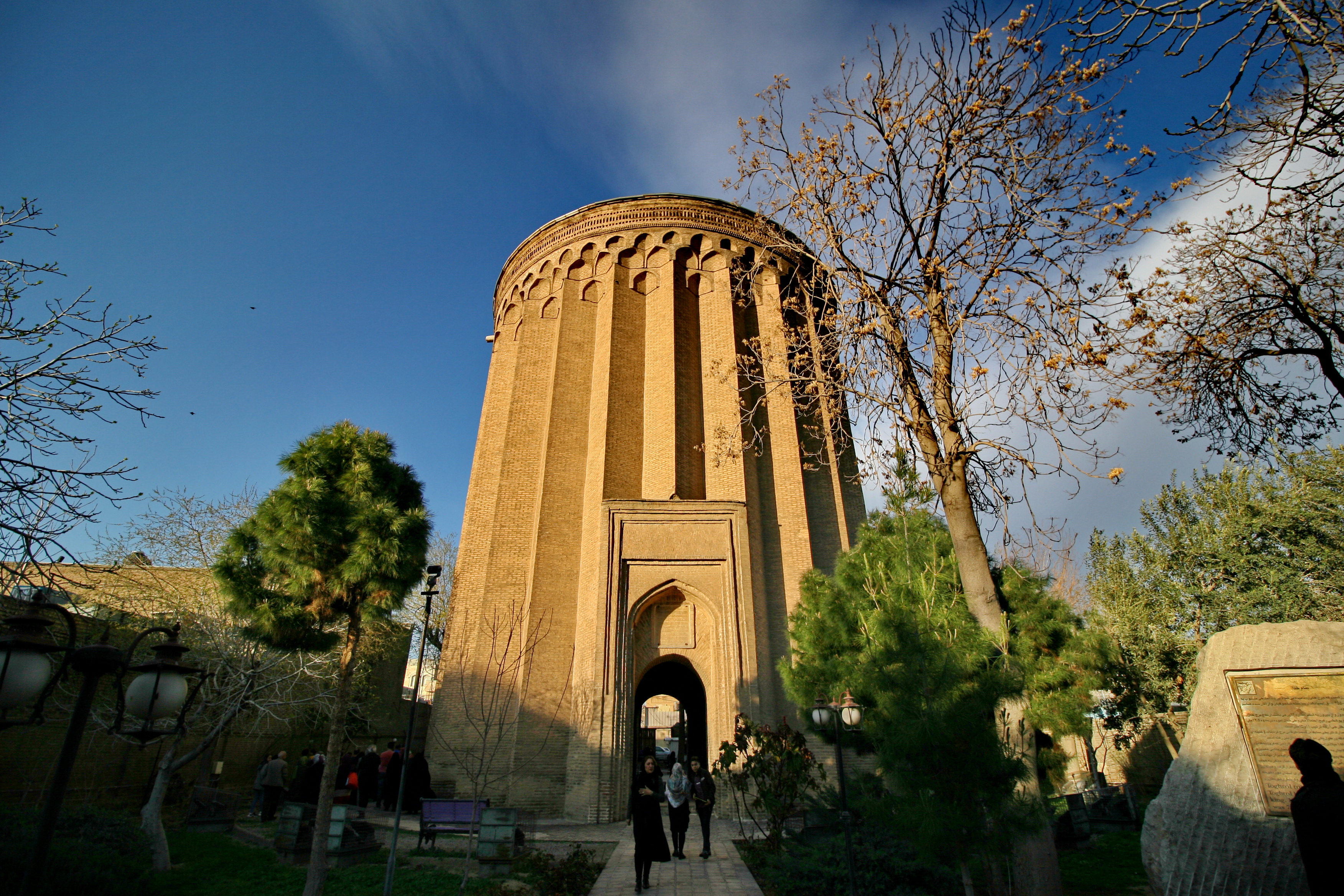
Toghrol tower
Toghrol Tower (also transliterated Toghrul, Tughrol, or Tughrul) is a 12th-century monument, located in the city of Rey, Iran. Tuğrul Tower is near Rashkan Castle.
The 20-metre-tall (66 ft) brick tower is the tomb of Seljuk ruler Tughril, who died in Rey in 1063. Originally, like other monuments of its time, it was capped by a conical dome , which collapsed during an earthquake.
The thickness of the walls varies from 1.75 to 2.75 meters. The inner and outer diameters are 11 and 16 meters, respectively. The exterior shape is that of a polygon with 24 angles in its design, which is thought to contribute to the structure's stability against tremors.
At the top of the tower, Kufic inscriptions were originally observable.
In some texts this place is called Burj Khalifa Yazid. According to some experts' ideas, this tower is like a clock pointer and the time can be recognized by the sunshine on its congresses.
History
It is said that one of the uses of this tower was to use it on foggy nights by lighting a fire on its high barrier to guide the travelers of the Silk Road coming from Khorasan to Rey, and to meet the chronological needs of the people during the day. According to Manouchehr Arian in the article "Another Look at the Towers", calling the term "tower" to this building and similar buildings refers to the annual moving passageways of sunlight in Zodiacal. In addition to this feature, Toghrol Tower has another unique feature called the sundial that is hidden in the heart of its congresses. Naser al-Din Shah ordered some restorations to be made to the top part of the tower, which was collapsing in 1884.
